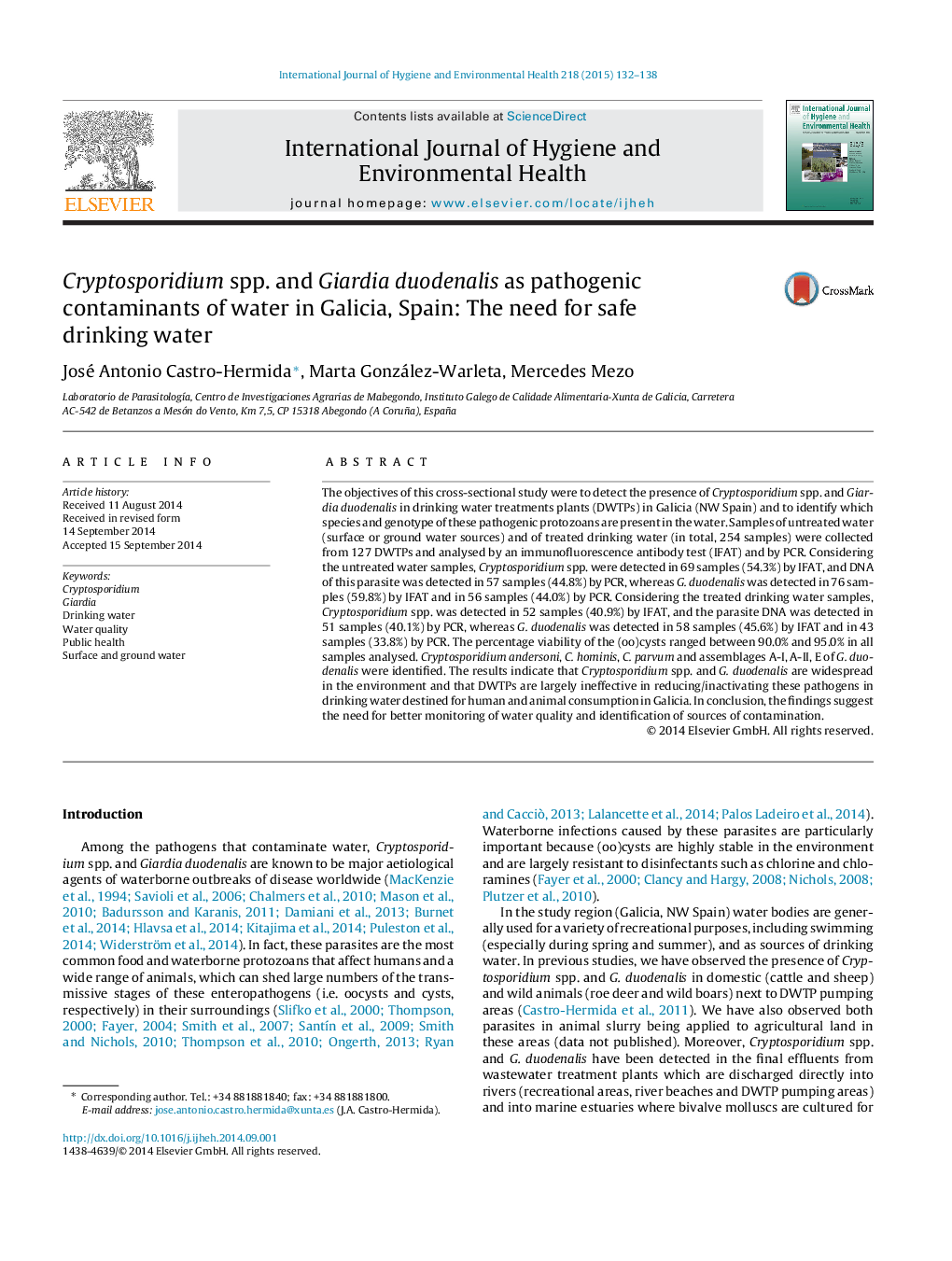| Article ID | Journal | Published Year | Pages | File Type |
|---|---|---|---|---|
| 5854622 | International Journal of Hygiene and Environmental Health | 2015 | 7 Pages |
The objectives of this cross-sectional study were to detect the presence of Cryptosporidium spp. and Giardia duodenalis in drinking water treatments plants (DWTPs) in Galicia (NW Spain) and to identify which species and genotype of these pathogenic protozoans are present in the water. Samples of untreated water (surface or ground water sources) and of treated drinking water (in total, 254 samples) were collected from 127 DWTPs and analysed by an immunofluorescence antibody test (IFAT) and by PCR. Considering the untreated water samples, Cryptosporidium spp. were detected in 69 samples (54.3%) by IFAT, and DNA of this parasite was detected in 57 samples (44.8%) by PCR, whereas G. duodenalis was detected in 76 samples (59.8%) by IFAT and in 56 samples (44.0%) by PCR. Considering the treated drinking water samples, Cryptosporidium spp. was detected in 52 samples (40.9%) by IFAT, and the parasite DNA was detected in 51 samples (40.1%) by PCR, whereas G. duodenalis was detected in 58 samples (45.6%) by IFAT and in 43 samples (33.8%) by PCR. The percentage viability of the (oo)cysts ranged between 90.0% and 95.0% in all samples analysed. Cryptosporidium andersoni, C. hominis, C. parvum and assemblages A-I, A-II, E of G. duodenalis were identified. The results indicate that Cryptosporidium spp. and G. duodenalis are widespread in the environment and that DWTPs are largely ineffective in reducing/inactivating these pathogens in drinking water destined for human and animal consumption in Galicia. In conclusion, the findings suggest the need for better monitoring of water quality and identification of sources of contamination.
